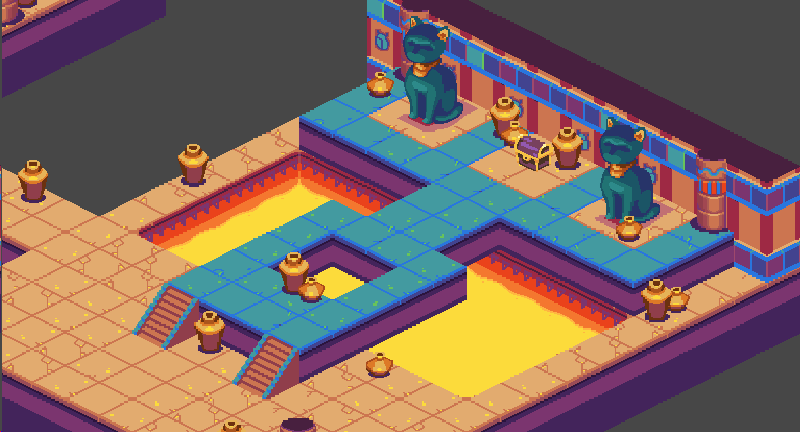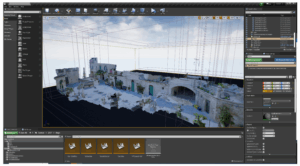Every video game is a universe built on decisions. From the grand architecture of its core mechanics to the subtle texture on a single stone wall, countless choices are made, debated, and implemented. However, for every feature that players see, there are dozens that end up on the cutting room floor. These are the ghosts in the machine—scrapped ideas, vestigial mechanics, and repurposed assets that haunt the final code. These “design ghosts” are more than just trivia for dedicated fans; they are fascinating windows into the chaotic, creative, and often compromised reality of game development. They are the echoes of what a game could have been, and they subtly influence the games we play today in ways most of us never notice. Understanding these development artifacts doesn’t just reveal secrets; it fosters a deeper appreciation for the complex art of making video games, transforming what might seem like a glitch or a quirky design into a story of the game’s creation.
The Anatomy of a Design Ghost: From Concept to Cut Content
The journey of a game feature from a spark of an idea to a fully implemented mechanic is a perilous one. The landscape of the gaming industry is littered with the remnants of ambitious concepts that, for one reason or another, never made it to the final release. This process of creation, iteration, and culling is where design ghosts are born.
Conceptualization and Prototyping
In the early stages of game development, ideas are fluid and abundant. Design teams use powerful tools, with frequent Unreal Engine News and Unity News showcasing new features that allow for rapid prototyping. A developer might prototype a complex physics-based puzzle system for an RPG, a dynamic weather system that affects NPC behavior, or an intricate aerial combat mechanic for an open-world game. These prototypes are built to test feasibility, fun factor, and technical performance. In a perfect world, every great idea would seamlessly integrate into the final product. However, the reality of development is far more complex, constrained by what is often referred to as the “production triangle”: time, budget, and scope. Changing any one of these affects the others.
The Cutting Room Floor: Why Features Get Scrapped
A feature can be cut for a multitude of reasons. Technical limitations are a primary culprit; a groundbreaking AI system might be too demanding for the target Console Gaming hardware, whether it’s the latest PlayStation or Xbox. Performance on lower-end Gaming PCs or Gaming Laptops must also be considered. Time and budget are constant pressures; a feature that is taking too long to perfect may be axed to meet a release date. Sometimes, the reason is purely creative. A mechanic that sounded great on paper might feel clunky or detract from the core gameplay loop. For example, a survival mechanic requiring players to eat and drink might be removed from a fast-paced FPS Game because it slows down the action. The feature is then relegated to the digital cutting room floor, but its influence doesn’t always vanish completely.
The Lingering Remnants
When a feature is cut late in development, completely excising it from the game’s code and asset library can be risky and time-consuming. This is where the artifacts emerge. An animation created for a scrapped dual-wielding system might be repurposed for a single-weapon attack, resulting in a slightly awkward motion. A 3D model of a creature designed to be seen from above during a cut aerial gameplay segment might be used in a standard third-person perspective, revealing its unpolished, low-poly underside. Dialogue might reference a character or location that no longer exists. These remnants are the design ghosts—functional, yet contextually strange pieces of a game’s forgotten past, often left behind due to the relentless forward march toward a shipping date.

Haunted Halls: Real-World Examples of Development Artifacts
While the concept of design ghosts may seem abstract, gaming history is filled with concrete examples. These phantoms range from entire systems hinted at in early demos to subtle quirks in character models that betray a change in design philosophy. They are a testament to the iterative and often unpredictable nature of creating interactive entertainment.
The E3 Demo That Never Was
Trade show demos, particularly from E3’s golden age, are a fertile breeding ground for design ghosts. These “vertical slices” are built to showcase a game’s vision but often contain mechanics that are too ambitious or experimental for the final release. The original 2007 demo for BioShock showed a much more dynamic and interactive world, with complex plasmid combos and a living ecosystem of Splicers and Big Daddies. While the core of this vision made it into the game, many of the intricate systems were simplified for balance and performance. The final game is a masterpiece, but playing it with knowledge of the demo reveals the ghosts of a more systemic, immersive simulation lurking just beneath the surface. This is a common tale across many AAA Games, where marketing timelines demand a polished preview long before the full game is finalized.
Vestigial Mechanics in Sequels
Long-running franchises are particularly susceptible to hosting design ghosts. A mechanic that was central to one game may be carried over into a sequel where the surrounding context has changed, leaving it feeling like a vestigial limb. For instance, a game might introduce a groundbreaking cover system that is intrinsically linked to its level design. A sequel, developed with a focus on more open-ended combat, might retain the cover system, but with levels that don’t support it as effectively, it becomes a less useful, almost forgotten feature. We see this in the evolution of many mechanics across series in the Strategy Games and RPG Games genres, where systems are inherited and tweaked over decades, sometimes losing their original purpose along the way.
The Curious Case of Asset Reuse
Perhaps the most common design ghost is the repurposed asset. In the world of iterative development, especially for yearly franchises like Call of Duty News headliners or expansive MMORPG News updates, reusing assets is a smart and necessary practice. However, it can lead to noticeable oddities. An armor set from a fantasy game might be slightly altered for a new title, but its design language clashes with the new game’s art style. More subtly, a character model might have been built with a specific gameplay feature in mind. Imagine a character in a game like Pokémon designed for a special battle type that uses a unique, low-angle camera. If that battle type is cut from a subsequent game, but the model is reused, players might notice its proportions or details seem strange from the standard camera view. This is a ghost born not of a bug, but of lost context—a design choice whose reasoning has been erased.
Digital Archaeology: How Players Discover Hidden Histories
The discovery of these design ghosts is rarely driven by developers. Instead, it’s a form of digital archaeology practiced by the most dedicated members of the Gaming Community. Through data mining, modding, and sheer observation, players piece together the hidden history of their favorite games.
The Role of the Gaming Community and Modders
Passionate fans are the chief excavators of cut content. Data miners trawl through game files, uncovering unused audio clips, textures, and even entire levels that were left in the final build. This often leads to exciting Gaming News and speculation. The Game Mods community takes this a step further, sometimes “restoring” this cut content to a playable state. Projects like the “Stalker: Lost Alpha” mod aimed to rebuild the original, much larger vision for the game S.T.A.L.K.E.R.: Shadow of Chernobyl using leaked beta builds and design documents. These efforts provide a tangible glimpse into an alternate development path and showcase the community’s dedication to preserving Gaming History.
From Glitch to Lore
Sometimes, a development artifact is so strange that it transcends its origin and becomes part of Gaming Culture. The most famous example is “MissingNo.” from the original Pokémon Red and Blue. This “glitch” was actually a series of exception handlers, essentially placeholder data for non-existent Pokémon slots. Due to a programming oversight, players could encounter it. Instead of being seen as a simple bug, MissingNo. became a legendary creature in its own right, with myths and strategies spreading across playgrounds and early internet forums. It’s a prime example of how a technical remnant can be adopted and given new meaning by the community, a true ghost that became a beloved part of Retro Gaming.
The Camera as a Storyteller (and a Betrayer)
A game’s camera is one of the most powerful tools a developer has to control the player’s experience. It directs the eye, frames the action, and, crucially, hides the imperfections. Developers often use low-polygon models or unfinished textures for objects they assume the player will never see up close. However, the rise of in-game photo modes, noclip cheats, and emergent player strategies can break this carefully constructed illusion. When a player manipulates the camera to go out of bounds or view a character model from an unintended angle, they are peeling back the curtain. They might find a character’s face is a flat, untextured plane on the side the camera never shows, or that a sprawling city in the distance is just a 2D matte painting. These discoveries aren’t flaws but reminders that games are a constructed reality, designed to be viewed from a very specific perspective.
Embracing the Imperfect: Best Practices and Takeaways
Design ghosts are an inevitable byproduct of the creative and technical challenges of game development. For both developers and players, they offer valuable lessons about the medium and the process behind it.
For Developers: The Art of the Cut
For those in Game Development, dealing with cut content is a delicate balance. The best practice is meticulous version control and clean code, ensuring that when a feature is removed, all its dependencies are removed with it to prevent future bugs. However, under the pressure of deadlines, this isn’t always feasible. The pragmatic approach often involves “commenting out” code or leaving assets in the files, a calculated risk to save precious development hours. The key takeaway is that every leftover piece has the potential to become a bug or an anomaly down the line. Acknowledging this and planning for disciplined content removal can save significant headaches, whether you’re a solo developer working on Indie Games or a massive team behind the next big Battle Royale.
For Players: A Deeper Appreciation
For players, discovering a design ghost should be a moment of curiosity, not criticism. These artifacts are not signs of laziness but scars from a complex and difficult creative battle. They tell a story about the game’s journey—the ambitious ideas, the tough compromises, and the human element behind the code. Understanding that the polished world on your Gaming Monitor is built upon a foundation of discarded concepts enriches the experience. It connects you to the developers and fosters a deeper appreciation for the incredible craftsmanship required to ship a finished game, transforming you from a mere consumer into a more informed and engaged participant in the culture of Video Games.
Conclusion
The video games we play are polished, curated experiences, but their code is often a living museum of their own development. Design ghosts—the remnants of cut features, the echoes of past mechanics, and the quirks of repurposed assets—are the silent storytellers of this hidden history. They reveal the compromises and creative pivots that define modern game development. Far from being simple flaws, these artifacts are a testament to the ambition and resilience of their creators. By learning to spot these phantoms in the machine, we as players can gain a more profound understanding of our favorite games, appreciating them not just as finished products, but as the complex, evolving, and beautifully imperfect works of art they truly are.











